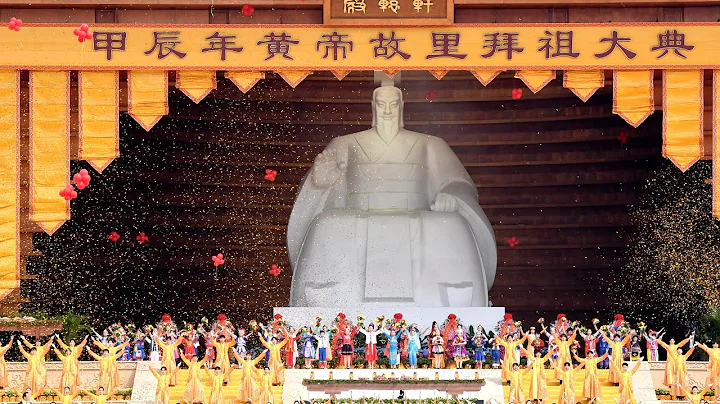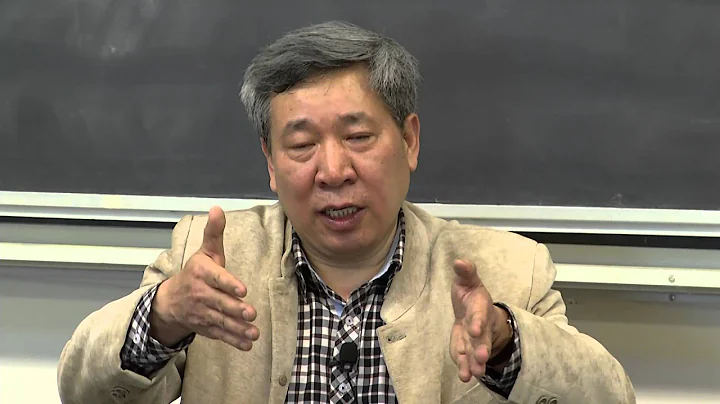In ancient history, Yan was a commonly used country name, such as Former Yan , Nan Yan, Later Yan , Xi Yan, etc. In the opinion of many people, the name of the country Yanguo should come from the Yanguo, one of the seven heroes of the Warring States Period, that is, the Yanguo with the surname Ji. However, in fact, during the pre-Qin period, there were still two Yan states. Below, let us talk about these three ancient Yan states.

1. Ji's surname was Yan Kingdom
Yan Kingdom (1044 BC - 222 BC), one of the vassal states of the Zhou royal family in the Zhou Dynasty . The ancestor was King Wen of Zhou the eldest son of the concubine Duke Zhao. In 1044 BC, after King Wu of the Zhou Dynasty destroyed the Shang Dynasty, he granted his younger brother Ji Xi the title of Duke Zhao of Yan. Although it is a vassal state with the surname Ji, for a long time, the reputation of Yan State cannot be compared with Jin State , Lu State , Zheng State and other vassal states. This is mainly because of the relatively remote geographical location of Yan State. .
For this reason, in the 7th century BC, the Yan State expanded to northern Hebei and western Liaoning. After annexing the Ji State, , it established its capital in Ji (today's Beijing ). In 323 BC, King Yi of Yan became king. At this time, although the Yan Kingdom was king, its overall strength was still weaker than the other six vassal states of the Seven Heroes of the Warring States Period. In 316 BC, the Zi Zhi Rebellion broke out in the Yan Kingdom. Two years later, King Xuan of Qi sent a large army to destroy Yan in the name of quelling the rebellion. In 312 BC, King Wuling of Zhao supported the prince position ( King Zhao of Yan ) to return to the country and ascend the throne, and the Yan Kingdom was restored. King Yan Zhao recruited wise men and worked hard to govern. He appointed Leyi to attack Qi and Qin Kai to defeat Donghu and North Korea, which was very prosperous for a while.

After the death of King Yan Zhao, the Yan Kingdom declined rapidly. After the Battle of Changping, Yan tried to take advantage of the situation, but was defeated by Zhao in a row and became a weak country. In 228 BC, Qin conquered Handan, the capital of Zhao, and led Chen's troops to change the water. Prince Dan of Yan, secretly sent Jing Ke to assassinate Qin, but failed in the end. Jing Ke was killed. King Ying Zheng of Qin was furious and ordered Wang Jian to be the king of Qin. sent troops to attack Yan. In 226 BC, King Xi of Yan united with Wang Jia of Zhao Dynasty to resist the Qin army. After the defeat, he led his royal guards to flee Liaodong. In 222 BC, King Qin Yingzheng sent Wang Ben to lead an army to attack Liaodong, and captured King Xi of Yan, and the Yan Kingdom was destroyed. Qin established Yuyang County, Beiping County, Liaoxi County, Liaodong County, etc. in the Yan region.
2. Ancient Yan Kingdom
Three thousand years ago, there were two small countries in the area around present-day Beijing. One was the Yan Kingdom and the other was the Ji Kingdom. The ancient Yan Kingdom and the ancient Ji Kingdom were adjacent to each other. They were both princes who were subordinate to the Shang Dynasty at that time. country.
There is a word "妟" in the oracle bone inscriptions of the Shang Dynasty. In the bronze inscriptions, "Yan" is written as "郾" or "彽", such as "Yanhou" and "Yanwang". "彽" or "龾" is called "齽" or "龾王". It can be seen from this that the Yan Kingdom is the Yan Kingdom.

From the end of the Shang Dynasty to the early days of the Western Zhou , the capital of the ancient Yan Kingdom was located near the Liuli River in Fangshan District, Beijing. A large-scale Yin Shang ruins were discovered here, which may be the former site of the ancient Yan Kingdom's capital. After King Wu of Zhou Ji Fa destroyed the Shang Dynasty, he granted the title of Duke Zhao to Yan. Therefore, it is very obvious that the Yan Kingdom with the surname Ji replaced the ancient Yan Kingdom to a certain extent. Furthermore, this shows that the ancient Yan State's position was biased towards the Shang Dynasty and was unwilling to submit to the newly established Western Zhou Dynasty.
3. Nan Yan Kingdom
The Nan Yan Kingdom had the surname of Ji, and its first king, Bo Min, was a descendant of Ji Guang, the descendant of Xuanyuan Huangdi. The Nan Yan Kingdom founded by Bo Min was located 45 miles northeast of Yanjin, Henan Province. Nanyan, whose surname is Si, was a small country, and its birthplace was on the banks of the Junshui River. Tang DynastyFamous ancient book expert and scholarKong Yingda (AD 574-648) explained: "In the Southern Yan Kingdom, the surname is Ji, after the Yellow Emperor. The ancestor is Bomin. The small country has no aristocratic family, so I don't know the name of its emperor."
"Zuo Zhuan" records the historical events of the Spring and Autumn Period. The emergence of the Southern Yan Kingdom was earlier than the Yan Kingdom with the surname Ji. However, it is a pity that the year of the demise of the Nanyan Kingdom has not been determined, but what is certain is that it will be destroyed in the 20th year of Lu Dinggong at the earliest (500 BC), because the last chapter in "Zuo Zhuan" The first mention of Nan Yan was in this year.

In 221 BC, Qin Shihuang eliminated the six kingdoms and established the Qin Dynasty , and began to implement the county system . In response, the Qin Dynasty established Nanyan County in the Nanyan Kingdom. After Emperor Wen of the Sui Dynasty Yang Jian established the Sui Dynasty , he changed Nanyan County to Xucheng County . In the second year of Tang Wude's reign, Xuzhou was established, and the original Xucheng County was changed to Nanyan County; in the fourth year of Tang Wude's reign, Tang Dynasty abolished Nanyan County and merged it into Xucheng County. Since then, the history of Nanyan as a district name has come to an end.





















